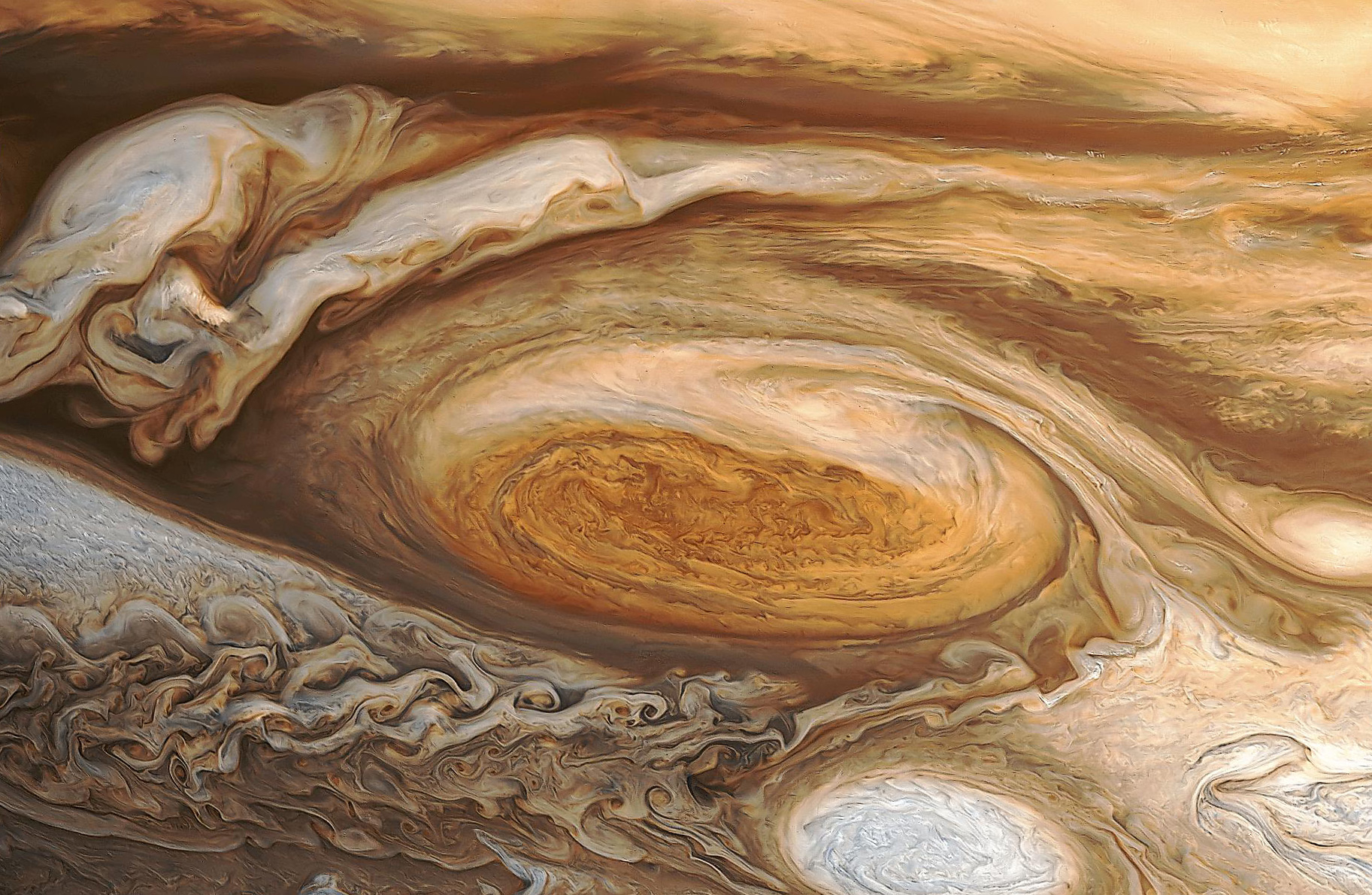What Is the Inside of Jupiter Made of
When Galileo Galilei discovered Jupiter in 1610, it is doubtful that he was aware of the impact this giant planet had on the surrounding solar system. From altering the evolution of Mars to preventing the formation of a ninth planet, the size and mass of Jupiter has seen it exert an influence on its neighbours second only to the Sun.
Jupiter's mass and composition almost more closely resemble a star than a planet, and in fact if it was 80 times more massive it would be classified as the former. It can virtually be regarded as being the centre of its own miniature solar system; 50 moons to date are known to orbit the gas giant, with the four largest (Io, Europa, Ganymede and Callisto, the Galilean satellites) each surpassing Pluto in size.
The comparison of Jupiter to a star owes a lot to the fact that it is composed almost entirely of gas. It has a large number of ammonia-based clouds floating above water vapour, with strong east-west winds in the upper atmosphere pulling these climate features into dark and light stripes. The majority of its atmosphere, however, is made up of hydrogen and helium.
The strength of Jupiter's gravity is such that it is held responsible for much of the development of nearby celestial bodies. The gravitational force of the gas giant is believed to have stunted the growth of Mars, consuming material that would have contributed to its size. It also prevented a new planet forming between these two and instead gave rise to the asteroid belt.
Much of our knowledge of Jupiter comes from seven spacecraft missions to visit the planet, starting with NASA's Pioneer 10 in 1973. The only man-made object to orbit the planet is the Galileo spacecraft, which studied the planet from 1995 until 2003, when it was sent crashing into Jupiter so as not to contaminate its moons with the debris.

Inside Jupiter
The Great Red Spot

Jupiter's Great Red Spot
One of Jupiter's most iconic features is the Great Red Spot, a storm more than twice the size of Earth that has been raging for hundreds of years. The redness is believed to be the result of compounds being brought up from deeper inside Jupiter, which turn brown and red upon exposure to the Sun. Although once highly elliptical in shape, it has become squashed in recent years for unknown reasons and is expected to become circular other the next few decades, although this anti-cyclonic storm shows no sign of dying out any time soon.
Discover more amazing space facts in the latest issue ofHow It Works.It's available from all good retailers, or you can order it online from the ImagineShop. If you have a tablet or smartphone, you can also download the digital version onto your iOS or Android device. To make sure you never miss an issue ofHow It Works magazine, make sure you subscribe today!
Plus, make sure you also check out our digital-only specials, such as Explore Mars, A Guide To The Galaxy and Earthquakes, available to download onto your digital device now!
What causes Jupiter's aurora?
Jupiter's gravity
What are hot Jupiters?
What Is the Inside of Jupiter Made of
Source: https://www.howitworksdaily.com/inside-jupiter-what-is-our-solar-systems-biggest-planet-made-of/
0 Response to "What Is the Inside of Jupiter Made of"
Post a Comment